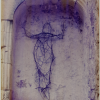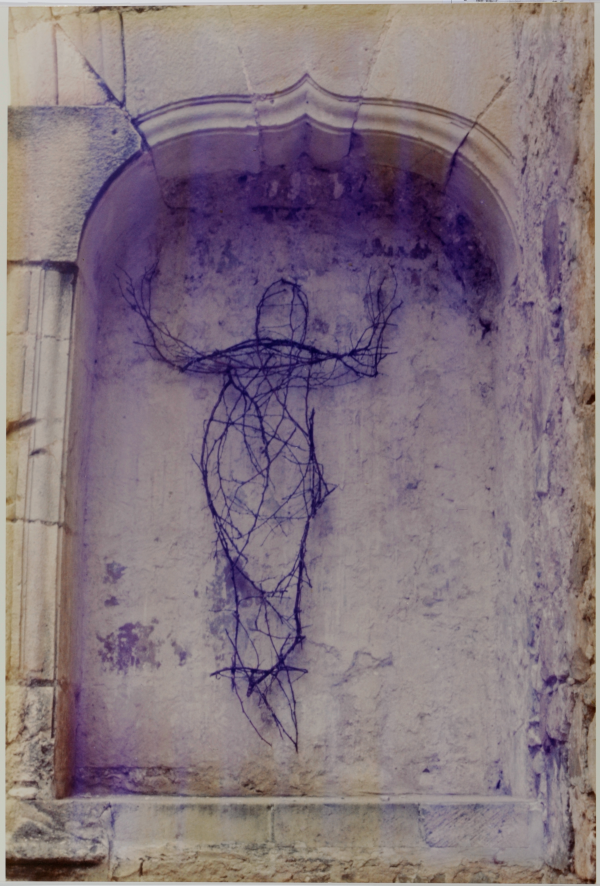Building Bodies from Nature
| Grade | Kindergarten, 1st Grade, 2nd Grade, 3rd Grade, 4th Grade, 5th Grade | Class | Length of Lesson | Approximately 2 - 3 (40 - minute sessions) |
| Lesson Title | Building Bodies from Nature |
| Unit Title | Exploring Displacement: Ana Mendieta |
| Unit Compelling Question | What is displacement? |
| Historical Context: WHO: Ana Mendieta WHEN: 1948-1985 WHAT: Cuban-American Performance and Interdisciplinary Artist FAMOUS FOR: Best known for her "earth-body" artwork and expressions of identity politics and feminism. IN HER OWN WORDS: "Art is a material act of culture, but its greatest value is its spiritual role, and that influences society, because it's the greatest contribution to the intellectual and moral development of humanity that can be made." ARTIST'S HISTORY: Mendieta was born in Havana, Cuba, to a wealthy and politically influential family. At the age of 12, she was sent to the U.S. with her sister under the anti-communist effort of Operation Peter Pan where she was placed in an orphanage in Dubuque, Iowa. In 1966, she began undergraduate studies at the University of Iowa. Later, she enrolled in the university's progressive MFA Intermedia Program founded by Hans Breder and graduated in 1978. After that, Mendieta was exhibiting internationally and moved to New York City. Her powerful, prolific career was cut short by her tragic and allegedly accidental, violent death in 1985. IOWA CONNECTIONS: Other than New York, Mendieta's experience in the U.S. was defined by her youth and education in Iowa. She spent her formative and exploratory art making years in and around Iowa City where she experimented with her first performances and societal critiques. She also taught elementary art with Iowa City Public Schools for a brief time while she was a graduate student. Despite her short career, Mendieta's influence and inspiration endure in the works of artists worldwide today. As a testament to her legacy, a gallery in the Visual Arts Building at the School of Art and Art History at UIowa permanently bears her name. ARTIST'S WORK: Reflections on displacement, feminism, violence, and nature appear in Mendiet'as artworks which include video, in-person performances, photographs, and sculptures. One of her most well-known works, Untitled (Siluetas Series), 1976, was a series of photographs of female silhouettes in nature - in mud, sand, and grass - with natural materials ranging from leaves and twigs to blood, and making body prints or painting her outline or silhouette onto a wall. In the examination of her work one is confronted with their own spiritual, temporary, and physical connections to themselves, the earth and others. ARTIST'S WORLD: Mendieta came of age in what is known as the "second wave" of feminism that focused on women's equal rights in politics, work, family, and sexuality. She was considered a pioneer in performance art which, at the time, was dominated by men. She also bore witness to the displacement and trauma of separation from Cuba that many of the children experienced under the program Operation Peter Pan. |
|
| Lesson Supporting Question | |
| Lesson Overview | Students will learn about the life and influence of artist Ana Mendieta, who was a prolific interdisciplinary artist who lived and attended school in Iowa. Using Untitled, from "Silueta Series, Mexico," 1976, as inspiration, students will collaboratively create a life-size human form(s) and sculpture(s) using natural materials (sticks, leaves, rocks, etc.). Students will work together, outside, and display the completed sculpture(s) outside for others to see. Students will then complete a discussion or written reflection focused on the advantages and disadvantages of working with others to complete an artwork. |
| Primary Sources Used |
|
| Resources Needed | *Please be advised, that many of Mendieta’s works are graphic, reference violence, and contain nudity. Curate accordingly. Other Notable Artworks: Untitled (Facial Hair Transplant), 1972 Untitled (Glass on Body Imprints – Face), 1972 Body Tracks, 1982 Online Resources (Used at Instructor's Discretion) ARTICLE: Ana Mendieta CUBAN-AMERICAN PERFORMANCE ARTIST, SCULPTOR, PAINTER, PHOTOGRAPHER AND VIDEO ARTIST VIDEO: Operation Pedro Pan: Our Parents' Decision VIDEO: Journey to Exile: Operation Peter Pan VIDEO: Operation Pedro Pan - The Largest Recorded Exodus of Unaccompanied Minors in the Western Hemisphere VIDEO: Ana Mendieta: Covered in Time and History - World Tour Materials: Access to internet Print/Copy/On Screen image of artwork Untitled, from "Silueta Series, Mexico", 1976 Found natural materials (wooden sticks, rocks, leaves, etc.) Outdoor space for sculpture display |
| Standard |
|
| Lesson Target | Students will analyze and discuss the artwork and life of artist Ana Mendieta and her connections to the state of Iowa and The University of Iowa.;Students will collaboratively create a human form made of natural elements.;Students will complete a discussion or written reflection focused on the advantages and disadvantages of working with others to complete an artwork. |
| Lesson Themes | Immigrants, Women's Experience, Media / Communication, Visual Arts |
|
| Formative Assessment (How will you use the formative assessments to monitor and inform instruction?) |
Discussion of Ana Mendieta's work and the collection of natural materials. |
| Summative Assessment (How does the lesson connect to planned summative assessment(s)?) |
Completed human forms and completed discussion/reflection. |
| Author | Megan Dehner | Created | Last Edited | ||||
| Reviewer: Teaching Iowa History Team | |||||||
| Lesson Plan Development Notes: Summer Fellowship 2022 | |||||||


